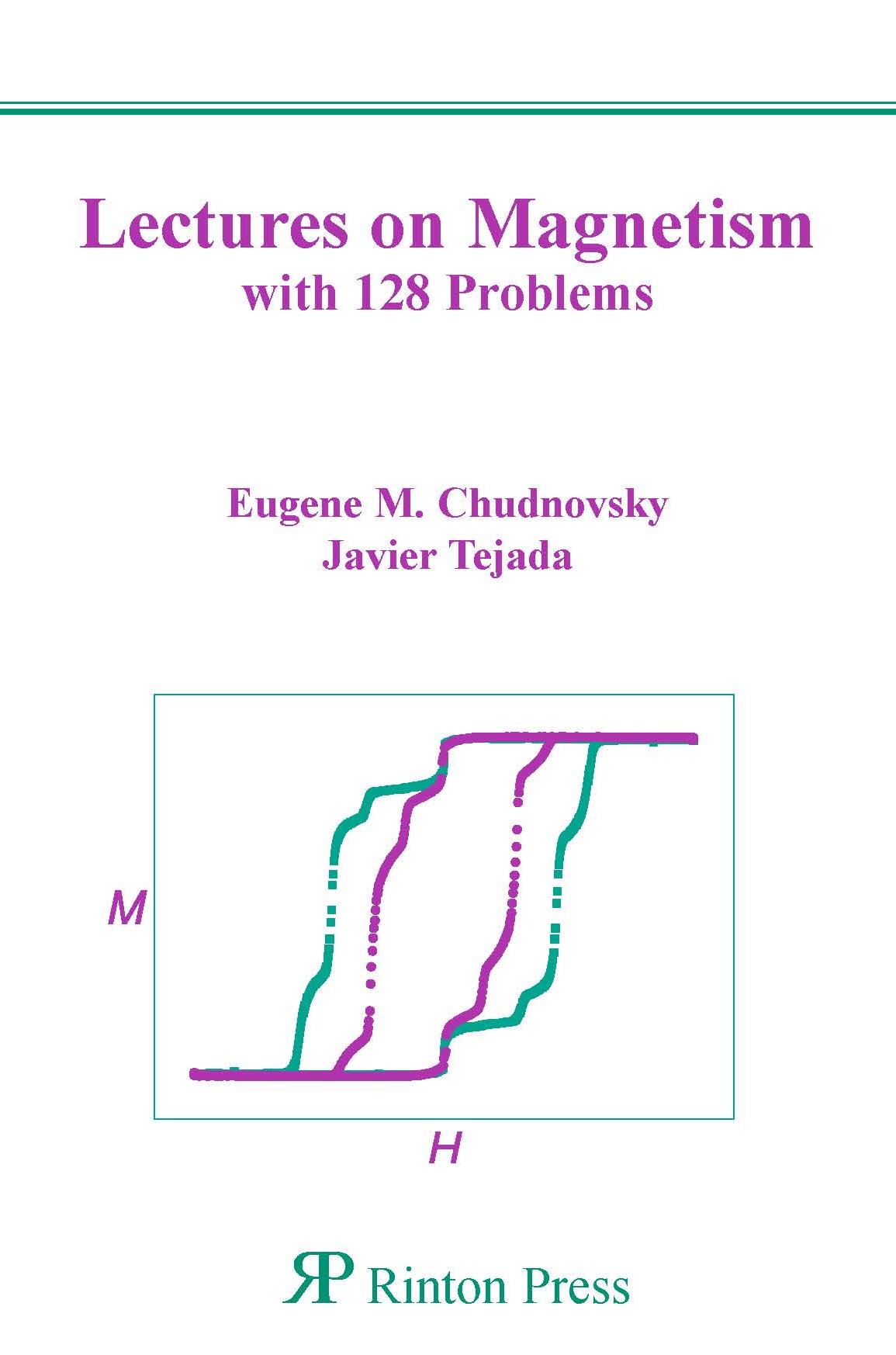|
 
This is a textbook for graduate
and upper-level undergraduate students, written by two
prominent researchers (theorist and experimentalist) who
have taught university-level magnetism for 30 years. It
is designed as a self-contained one-semester course in
modern and conventional magnetism that should prepare
students for reading contemporary scientific literature.
The book is divided into three
Chapters that discuss magnetic phenomena according to
their spatial scale. The nanometer scale of
individual atoms and molecules is considered in the
first Chapter. The second Chapter studies microscopic
models of the magnetic order in systems of many
interacting atoms or itinerant electrons. Magnetism at
the mesoscopic scale of magnetic domains is
discussed in the third Chapter.
In selecting
material for the book, the authors were giving
preference to simple mathematically rigorous models that
attempt to explain magnetic phenomena qualitatively.
Such models form the language of condensed matter
physics necessary for quantitative experimental or
numerical study of solids. Throughout the book the
agreement between theory and experiment is illustrated
by data taken from real magnetic materials.
Each section is
designed as a lecture. All derivations can be followed
by the students step by step through independent reading
or when presented on the blackboard by the instructor.
The derivations are self-contained or use results
obtained in previous sections. Each section is
accompanied by a few homework problems. Some require
numerical work with common mathematical software. |
|

Magnetism of solids transcends many areas of condensed
matter physics. It is one of the most important topics
of material science. Until recently, fundamental theory
and applications of magnetic materials have been rather
far apart. Founding fathers of quantum physics focused
their attention on explanation of magnetic order within
quantum theory of interacting spins. This also has been
the trend of modern theory of magnetism, especially in
application to low-dimensional systems. On the contrary,
most of practical applications of magnetic materials
(such as, e.g., magnetic recording) are based upon
classical theory. This is because the magnetic moment,
formed by quantum interactions at the nanoscale, behaves
as a macroscopic classical vector at the mesoscopic
scale of, e.g., magnetic memory units. With the
emergence of experimental nanoscience this situation has
changed. Solid state experiment has approached the
spatial scale where quantization of the magnetic moment
becomes apparent. The field of molecular magnetism is
one example of such a research. In this book we have
attempted to show beautiful non-trivial connections
between physics and mathematics of magnetic phenomena at
different spatial scales. Magnetism at the nanometer
scale of individual atoms and molecules is discussed in
the first Chapter. Magnetic order at the mesoscopic
scale of many interacting atoms and itinerant electrons
is studied in the second Chapter. Magnetism at the
macroscopic scale of magnetic domains is considered in
the third Chapter.
The
motivation for writing this book came in part from our
observation that the basic knowledge of magnetism of
solids among young physicists has been steadily
declining. The reason is obvious. Due to the enormous
progress of condensed matter physics during the last 50
years, the time allocated by university programs to each
topic has reduced dramatically. Responding to that trend
we have attempted to write a compact one-semester course
on magnetism of solids for graduate and upper-level
undergraduate students. In selecting the material we
were guided by the principle that physics can only be
understood through mathematics. The preference was given
to simple mathematically rigorous models that explain
magnetic phenomena qualitatively. Each of the 24
Sections of the book is designed as a lecture. All
derivations are self-contained or use results obtained
in previous sections. They can be followed by students
step by step when presented on the blackboard or through
independent reading. Each Section is accompanied by
homework problems. Most of the problems are of
analytical nature but some require simple numerical work
with common mathematical software. Solutions of all
problems are presented in an independent book
co-authored by our students, Carlos Calero and Ferran
Macia. Throughout the book we are using International
System of units. The reader should keep this in mind
when comparing our formulas with formulas of earlier
books on magnetism of solids.
Finally, we would like to acknowledge contribution of
our colleague and friend Professor Dmitry Garanin who
provided us with invaluable comments at all stages of
the work on this book.
|

|
 Eugene
Chudnovsky is a
Distinguished Professor of Physics at the City
University of New York. He was educated in
Russia and spent one year at Tufts University
before coming to New York in 1988. Dr.
Chudnovsky is best known for his theory of
amorphous magnets and his theory of quantum
tunneling of the magnetic moment. He has
published over 150 research papers and has given
numerous invited and plenary talks at scientific
meetings. Eugene
Chudnovsky is a
Distinguished Professor of Physics at the City
University of New York. He was educated in
Russia and spent one year at Tufts University
before coming to New York in 1988. Dr.
Chudnovsky is best known for his theory of
amorphous magnets and his theory of quantum
tunneling of the magnetic moment. He has
published over 150 research papers and has given
numerous invited and plenary talks at scientific
meetings. |
 Dr.
Javier Tejada is a
Professor of Condensed Matter Physics and the
head of the UBXLAB at the University of
Barcelona where he directs experimental research
in the field of nanomagnetism. He has published
over 250 research papers and holds 12
international patents. Dr. Tejada is best known
for his experimental work on spin tunneling and
molecular magnetism. He has co-authored a book
with E. Chudnovsky on “Quantum Tunneling of the
Magnetic Moment” (Cambridge University Press,
1998). Dr.
Javier Tejada is a
Professor of Condensed Matter Physics and the
head of the UBXLAB at the University of
Barcelona where he directs experimental research
in the field of nanomagnetism. He has published
over 250 research papers and holds 12
international patents. Dr. Tejada is best known
for his experimental work on spin tunneling and
molecular magnetism. He has co-authored a book
with E. Chudnovsky on “Quantum Tunneling of the
Magnetic Moment” (Cambridge University Press,
1998). |
** As a promotional effort, before
June 30 2007, the
individual buyers will receive a 50% discount if they
put order for this title directly to Rinton Sales (sales@rintonpress.com).
|

